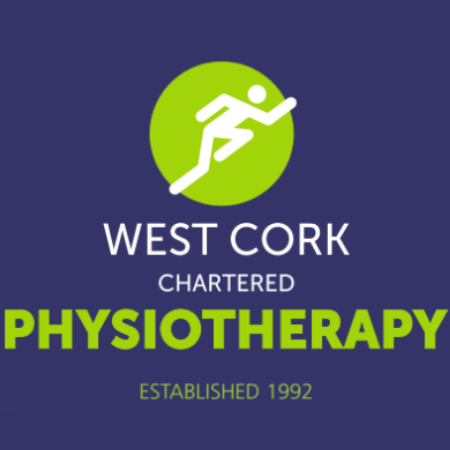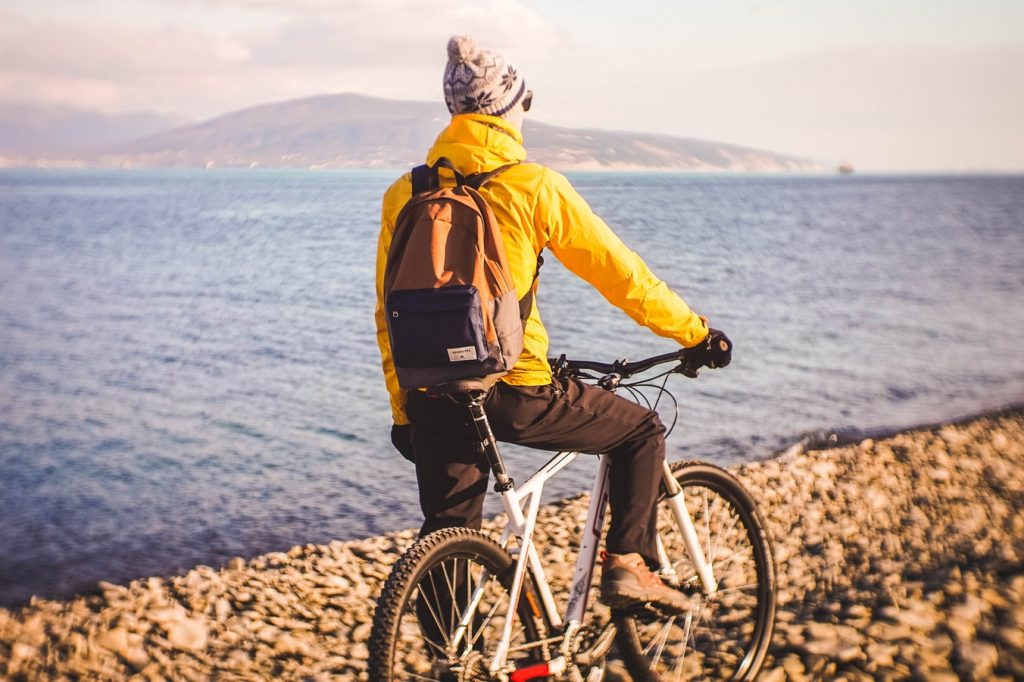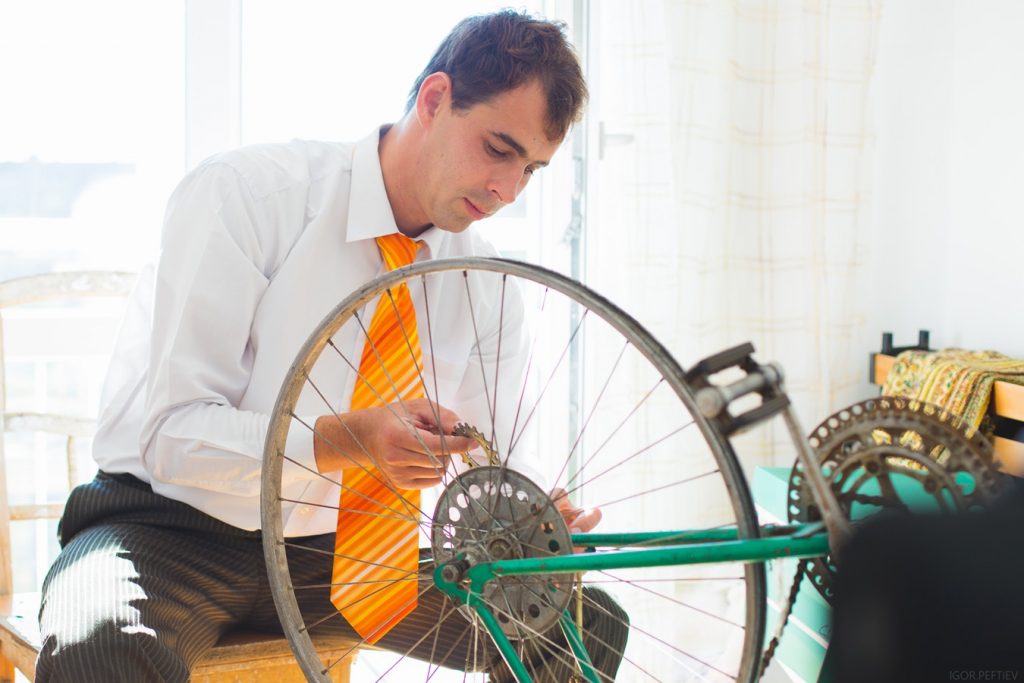Cycling is not only fantastic fun and a great way to tour the countryside or get to work – it is also very good for you. But injuries and strains are common. While cycling is known for fractures from nasty high speed falls, it is repetitive cycling injuries that cause most cyclists pain unnecessarily. There are things that you can do to make sure that it is all positive! Here is a quick guide to the do’s and don’ts.
Positives
Cycling is mainly an aerobic activity, which means that your heart, blood vessels and lungs all get a workout. You will also breathe deeper which will improve your overall fitness level. You will enjoy increased cardiovascular fitness, muscle strength and flexibility and improved joint mobility. Cycling will improve your overall health by strengthening bones, decreasing body fat levels and help with the prevention and management of disease. The regular exercise and sense of well being can also help to decrease stress levels, reduced anxiety and combat depression.
Common problems
In spite of all this there are common injuries and problems associated with cycling if it is not managed properly. These are of two kinds- strain injuries from overload or overuse of some parts of your body and trauma from accidents.
Overuse/Overload
“An injury sustained from a repeated action or resulting from a physical stress/load applied to the body that is greater than the tissues can tolerate”.
Poor posture
Cycling is sitting and we all sit far too much. Cycling strengthens your cardiovascular and musculoskeletal systems, whereas sitting destroys both. The problem is that cycling and sitting cause similar muscle imbalances. These include a rounded-forward posture and a rigid upper back and tight hips . Be careful not to round your shoulders as you lean forward.
Repetitive strain
Cycling requires your legs to move in a repetitive motion, which can cause overuse injuries. The hips and knees are most commonly affected. Cycling is non-weight-bearing, which is ideal if you have osteoarthritis, but not ideal if you are exercising with the intent of strengthening your bones to prevent or manage osteoporosis.
How to remedy this
Avoiding overload and repetitive strain injuries is about set up and technique. Knee pain, back pain, hip pain, sciatica and neck pain are common complaints from a poor bike setup and too many miles cycled in the wrong position.
Saddle Height
Saddle height is arguably the most important measurement for cyclists. It’s essential because it impacts your comfort level, your cycling speed and your knee health. To get the proper seat height, you want the saddle to be high enough that your heel barely touches the pedal at the bottom of the pedal rotation, but not so high that your heel comes above your toes at the bottom of the pedal stroke.
The front of your kneecap should be directly over your pedal spindle when you’re mid-pedal stroke. You can dangle a piece of string with a small weight at the bottom from the side of the rider’s kneecap to see if it lines up directly with the spindle.
Reach to Your Handlebars
Handlebar reach is the distance you reach from your saddle to your handlebars. A too-long reach (when you’re stretching really far to reach the bars) can upset the weight distribution across the front and back wheels of your bike, meaning that you risk being uncomfortable and will have trouble controlling your bike. A too-short reach (where you’re sitting more upright because the distance is so short) can be just as bad. If your position is too upright it will decrease your power and control of the bike.
Toe clips
Use toe clips to help increase the efficiency of your cycling, and reduce the strain on your legs. They enable you to pull up as well as push down.
Prevention
Prevent strain, as with all exercise, by pacing and warming up
- Warm up and cool down properly.
- Stretch dynamically before you cycle and afterwards.
- Go for a sports massage to get those knots out and to keeps muscles supple.
- Try interval training, this is more intense and will help increase your strength and resilience.
Trauma
“A physical injury of sudden onset and severity that requires immediate intervention”.
Traumatic injuries are reduced by following safety rules and wearing the right equipment. Traumatic injuries most commonly result from accidents due to falls and crashes and typically include fracture/break of the collar bone, the wrist, contusions (bruising) to soft tissue and/or bone and head injuMaximise your visibility on a bike
Safety and key equipment
- Wear a helmet. This can be lifesaving if you are involved in an accident.
- Wear dedicated and seamless cycling shorts will prevent chafing and soreness from repeated rubbing.
- Keep dirt, insects and the glare of the sun out of your eyes by wearing sunglasses or goggles.
- Wear brightly coloured clothes. Make it easier for motorists to see you.
- Wear reflective garments, including reflectors fitted to the back of your shoes, to increase your visibility at night.
- Have lights fitted to your bike, front and back, for riding in all conditions.
- Break carefully. Hard braking is a common cause of cycling injuries, as it can cause the brakes to lock and the rider to fall over the handlebars.
Look after your bike
- Have your bicycle professionally serviced at least once every year.
- Regularly check your tyres, bearings, gears, nuts and bolts, and lubricate the chain and cables.
- Invest in a basic bike tool kit – This should include a puncture repair kit, a spare inner tube, a tyre levers and a pump.
Obey the rules of the road when cycling
Cycling courteously and following the rules will improve your safety and that of others.
Remember especially :
- Don’t ride on the wrong side of the road or coast through red lights.
- Flag your intention to turn by hand signalling.
- Ride in a predictable way, about one metre out from parked cars.
- Brake smoothly.
- Ride in single file in heavy traffic (even though cyclists are permitted to ride two abreast).
- Make eye contact with car drivers when negotiating turns or intersections.
- Not wearing headphones while cycling. You need to hear what’s going on around you.
- having your bicycle professionally serviced at least once every year.
- regularly checking your bike (once a week if you’re a frequent rider) to make sure it is in good repair. Check the tyres, bearings, gears, nuts and bolts, and lubricate the chain and cables. If you’re not sure how to do this, consult your local bike shop.
Consult your physiotherapist
A cycling physiotherapist will be able to identify if you have any lack of motion, strength deficits and help you address these possible sources of injury. They can also help with any pain or injury caused while cycling.
Common Sources of Cycling Pain
- AC Joint Injury
- Achilles Tendonitis / Tendinitis
- Adductor Tendinopathy
- Avascular Necrosis of the Femoral Head
- Back Muscle Pain
- Broken Wrist
- Bulging Disc
- Bursitis Knee
- Calf Muscle Tear
- Carpal Tunnel Syndrome
- Chondromalacia Patella
- Compartment Syndrome
- Cramps
- Degenerative Disc Disease
- Dislocated Shoulder
- Facet Joint Pain
- Femoroacetabular Impingement (FAI)
- Gluteal Tendinopathy
- Golfers Elbow
- Greater Trochanteric Pain Syndrome
- Groin Strain
- Hamstring Strain
- High Ankle Sprain
- Hip Arthritis (Osteoarthritis)
- Hip Labral Tear
- ITB Syndrome
- Knee Arthritis
- Knee Ligament Injuries
- Meniscus Tear
- Metatarsalgia
- Morton’s Neuroma
- Muscle Strain
- Neck Arm Pain
- Neck Headache
- Neck Sprain
- Overuse Injuries
- Patella Tendonitis (Tendinopathy)
- Patellofemoral Pain Syndrome
- Peroneal Tendonitis
- Pes Anserinus Bursitis & Tendinitis
- Pes Planus – Flat Feet
- Pinched Nerve
- Piriformis Syndrome
- Plica Syndrome
- Poor Hip Core
- Posterolateral Corner Injury
- Rotator Cuff Syndrome
- Sacroiliac Joint Pain
- Sciatica
- Shoulder Impingement
- Sinding Larsen Johansson Syndrome
- Tarsal Tunnel Syndrome
- Thigh Strain
- Thumb Sprain
- Tibialis Posterior Tendinopathy
- Trochanteric Bursitis
- Whiplash



